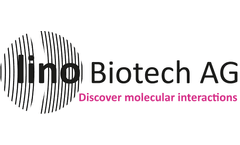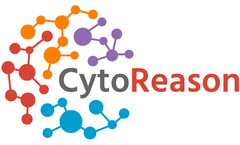Tumor Specificity Articles & Analysis: Older
24 articles found
Picture enzymes as the master choreographers, each with a specific role to ensure the mRNA production process runs smoothly. Let me introduce you to the key players: RNA Polymerase: The Architect RNA polymerase is the cornerstone enzyme for mRNA transcription. ...
In the environment of cancer, antigens may be specific to tumor cells and are known as tumor-specific antigens (TSAs) or tumor-associated antigens (TAAs). ...
Immunohistochemistry is the study of the localization, characterization, and relative quantification of peptides and proteins in tissue cells using the antigen-antibody reaction, in which an antigen specifically binds to an antibody and a chemical reaction results in the visualization of dyes such as fluorescein and other chromogens, as well as enzymes, metal ions and isotopes, ...
Antibody-PROTAC conjugates combine the catalytic properties of PROTAC with the tissue specificity of ADC, thereby overcoming the traditional limitations of targeting degraders and ADCs, and have great potential in targeting new targets.ADC with NIR-PIT Drug as PayloadNear-infrared photoimmunotherapy (NIR-PIT) drugs typically consist of ...
Bispecific antibody conjugates (BsAb ADCs) are one of the emerging new technologies. The high specificity of bispecific antibodies enables more precise targeting of tumor cells. ...
Car-t cell therapy involves genetically engineering T cells isolated from patients or allogeneic donors to express chimeric antigen receptors (CAR) that specifically recognize and kill tumor cells. As a "living" drug, CAR-T therapy is very different from traditional drugs. It is a new type of precision targeted therapy for the treatment of ...
Although TMB shows potential as a biomarker for immunotherapy in solid tumors, consensus on the optimal TMB threshold for specific tumor types remains elusive. ...
Structurally, an ADC consists of monoclonal antibodies (Antibody) that target specific antigens on tumor surfaces, cytotoxic drugs (drugs) that kill tumor cells, and linkers (Conjugate/ linkers) that conjugate cytotoxic drugs to antibodies. ...
Targets can be divided into tumor-specific antigens (TSA) and tumor-associated antigens (TAA) according to their expression. Antigens that are only expressed in tumor cells but not in normal cells are tumor-specific antigens and the most ideal targets; antigens that are lowly expressed in normal ...
The aim of the project was to develop a Polish complementary system of molecular surgical navigation for the treatment of ...
These drugs have shown some success; the caveat is that while immune cell function is no longer hampered with regards to cancer cells, it is not targeted to tumor-specific T cells. This means that T cell function can no longer be controlled by checkpoint molecules, which can cause highly exaggerated immune responses and drastic side-effects. ...
The Challenge: One of the most common challenges in immuno-oncology is identifying the indications and patient populations that would benefit from a specific therapy, especially on top of Standard of Care (SOC) treatments. Our platform tackled this challenge of indication prioritization and patient stratification for a combination of a specific target (A) with an anti-PDX drug that one of our ...
Pairing high parameter flow cytometry with Ozette’s next generation analysis helped decipher the complex immune landscape of tumors and revealed tumor-specific cell populations that modulate immune responses. ...
Its biological function has not yet been clarified, but due to its limited distribution in normal tissues and high expression in some tumor tissues, it is expected to be used in tumor-specific treatment. In existing studies of human epidermoid carcinoma cell lines expressing mesothelin, biodistribution analysis of mesothelin using radiolabeled ...
This suggests that the expression of mesothelin and its relationship with prognosis and aggressiveness are tumor-specific. The interacting protein of mesothelin is CA125/MUC16, a member of the mucin family, which is expressed in ovarian cancer and malignant mesothelioma. ...
Cytokines-mediated signaling is a primary way of immune system communication. The common gamma-chain family of cytokines is a set of six cytokines that signal through the common cytokine γ chain receptor (γc/CD132/IL2RG). These cytokines include IL-2, IL-4, IL-7, IL-9, IL-15, and IL-21. Besides the IL-2RG receptor subunit, the γc family cytokine receptors include IL-2RB ...
Oligo and siRNA Transport As an important means for targeted therapy of specific genes, oligonucleotides and siRNA can regulate protein activation and post-transcriptional gene expression. ...
How to quickly and accurately translate massive tumor genomic information into safe and effective cancer targeted therapies in clinical practice is a scientific frontier today. ...
TCR-engineered T cells express tumor antigen-specific receptors with alpha and beta chains generated from high-quality, high-affinity clones of antigen-specific T cells. ...
Antibody engineering has progressed drastically over the last ten years, allowing for more site-specific coupling and enhancing ADC homogeneity and stability. With the goal of improving therapeutic efficacy and safety, new second and third generation ADCs have entered the clinic. ...
















